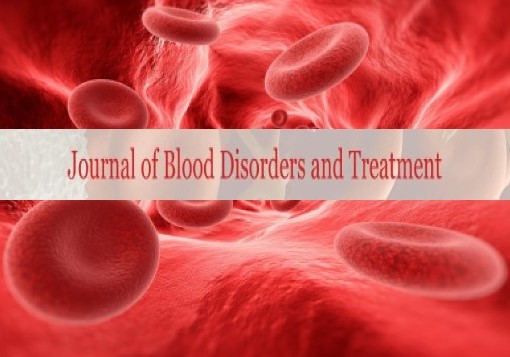Bone marrow failure
Received: 04-Feb-2023, Manuscript No. puljbdt-23-6253; Editor assigned: 06-Feb-2023, Pre QC No. puljbdt-23-6253 (PQ); Accepted Date: Feb 25, 2023; Reviewed: 10-Feb-2023 QC No. puljbdt-23-6253 (Q); Revised: 12-Feb-2023, Manuscript No. puljbdt-23-6253 (R); Published: 28-Feb-2023, DOI: 10.37532/puljbdt.2023.6(1).01-02
Citation: Van A. Bone marrow failure. J. Blood Disord Treat. 2023;6(1):01-02
This open-access article is distributed under the terms of the Creative Commons Attribution Non-Commercial License (CC BY-NC) (http://creativecommons.org/licenses/by-nc/4.0/), which permits reuse, distribution and reproduction of the article, provided that the original work is properly cited and the reuse is restricted to noncommercial purposes. For commercial reuse, contact reprints@pulsus.com
Abstract
In cases of Bone Marrow Failure (BMF), one or more main hematopoietic lineages are not produced as much, which results in a reduction or absence of hematopoietic precursors in the bone marrow and the cytopenias that go along with it. It falls into the acquired and inherited groups. In this activity, the acquired forms will be briefly discussed and the inherited forms will be reviewed in more depth.
Keywords
Bone Marrow ; Hematopoietic ; Cytopenias
Introduction
B one Marrow Failure that is inherited results from germline mutations that are handed down from parents or develop spontaneously. Patients frequently have extra-marrow characteristics particular to each syndrome in addition to aplastic anemia signs like fatigue, hemorrhage, and recurrent bacterial infections.
Fanconi Anemia (FA), Dyskeratosis Congenita (DC), ShwachmanDiamond Syndrome (SDS), Congenital Amegakaryocytic Thrombocytopenia (CAMT), Blackfan-Diamond Anemia (BDA), and Reticular Dysgenesis (RD) are the most prevalent Hereditary Bone Marrow Failure Syndromes (IBMFSs). Others are rarer and have characteristics in common with the inherited bone marrow failure disorders mentioned, such as short telomerase.
At age 50, bone marrow loss occurs 50% of the time. Bone marrow failure accounts for the bulk of fatalities, which are then followed by cancer and lung disease (pulmonary fibrosis with or without HSCT). Over the previous ten years, the median survival rate has increased from 34 to 49 years. With the exception of pulmonary fibrosis, which is specific to DC, the causes of death are comparable to those described for FA. Less frequently occurring than in FA are MDS and AML, as well as solid malignancies like head and neck squamous cell carcinoma, anorectal, esophageal/gastric, brain, renal, and others. All of these cancers manifest earlier in patients with FA but later than they do in the general community.
A decrease or cessation in the production of blood cells that affects one or more cell lines is known as bone marrow failure. Most instances of bone marrow failure, especially in severe or advanced stages, are characterized by pancytopenia, or decreased numbers of circulating Red Blood Cells (RBCs), White Blood Cells (WBCs), and platelets.
Ineffective hematopoiesis brought on by stem cell mutations or vitamin B12 or folate deficiency; disruption of the bone marrow microenvironment that supports hematopoiesis; decrease in hematopoiesis; and destruction of hematopoietic stem cells as a result of injury by drugs, chemicals, radiation, viruses, or autoimmune mechanisms are just a few of the pathophysiologic factors that cause bone marrow failure and loss of healthy hematopoietic tissue brought on by the invasion of abnormal cells into the marrow cavity.
Childhood Bone Marrow Failure Syndromes (BMFs) are a diverse collection of inherited or acquired diseases characterized by impaired blood cell production. Pediatric BMFs are essentially treated and have a similar pathophysiology as adult BMFs. However, inherited BMFs, which account for 10% to 20% of all childhood BMFs, are more common in pediatric groups. Clinically, it can be difficult to make a conclusive identification of hypoplastic BMFs, especially when there is no known chromosomal abnormality.
Failure of the bone marrow is a frequent but not always unavoidable complication of telomere disease. Cytopenias usually appear in children with dyskeratosis congenita within the first ten years of life. Progressive pancytopenia that meets the requirements for serious aplastic anemia may manifest by the second or third decade. If mucocutenaous features of dyskeratosis congenita were not previously identified or in the variant syndromes, like Hoyeraal-Hreidarsson syndrome, where severe aplastic anemia can be the initial symptom, severe marrow failure can be the presenting symptom. The length of a person's telomere, the gene that is affected, or the location of a gene mutation cannot be used to forecast the likelihood of marrow failure or the severity of disease presentation.
The primary causes of early death in DC are immune deficiency and bone marrow failure. As with other forms of bone marrow failure, supportive therapy (blood and platelet transfusions) is crucial for DC patients with significant peripheral cytopenia. They must also receive quick antimicrobial treatment if they experience pyrexia. Medicinal consideration should also be made to treatments like intravenous immunoglobulin and antibiotic prophylaxis for individuals with variable immune deficiencies. The hematological (trilineage) function can be significantly improved by the anabolic steroid oxymetholone.
Oxymetholone's exact mode of action is unclear, but it is believed to work by supporting hemopoietic production under stress and indirectly encouraging the growth of hematopoietic progenitors through the impact of cytokine production. Additionally, it is known that reproductive hormones can boost telomerase activity by affecting the TERT gene.
A collection of illnesses known as the "bone marrow failure syndromes" can either be inherited or acquired. These conditions are intrinsic disorders of the bone marrow that affect hematopoietic stem cells' homeostasis and function, impairing their ability to produce one or more cell types.
Hematological improvement following immunosuppressive therapies is the clearest indirect indication that immune cells were involved in the development of acquired Bone Marrow Failure (BMF) syndromes, which are classified as immune-mediated disorders. The most widely accepted pathophysiology theories involve immune dysregulation following repeated antigen exposure or cross-reactivity between viral particles and cellular components; however, the epitopes that these lymphocytes are directed to are still unknown. In this study, we demonstrated that immunodominant clones associated with BMF, i.e., the most prevalent T cells in a random pool carrying an antigen-specific T-cell receptor sequence, were frequently linked to those reported in various infectious diseases, including cytomegalovirus and Mycobacterium tuberculosis infection.





